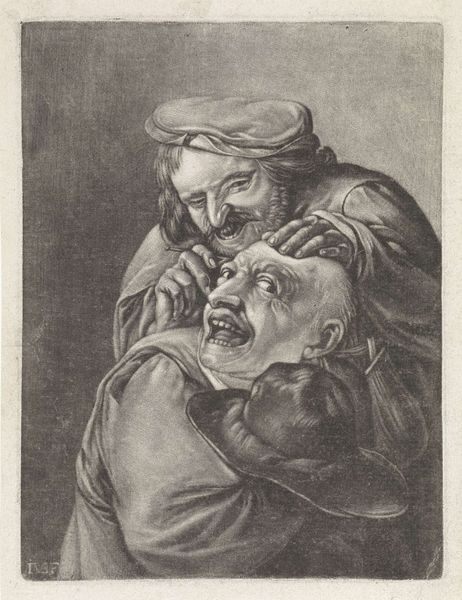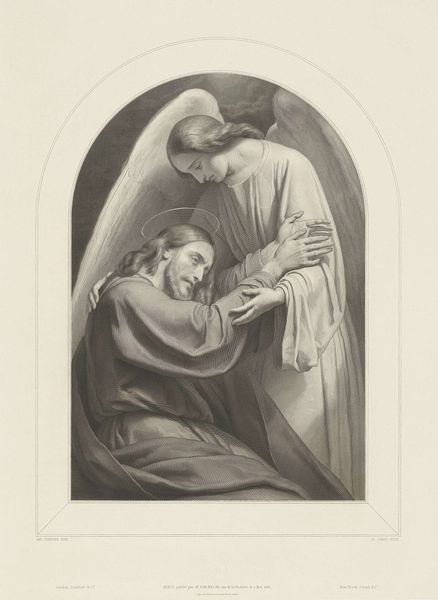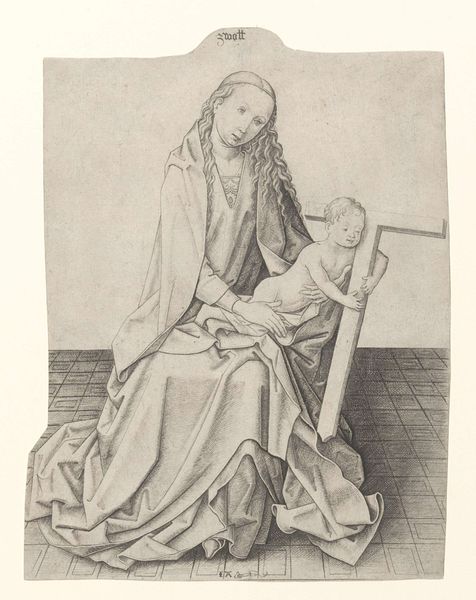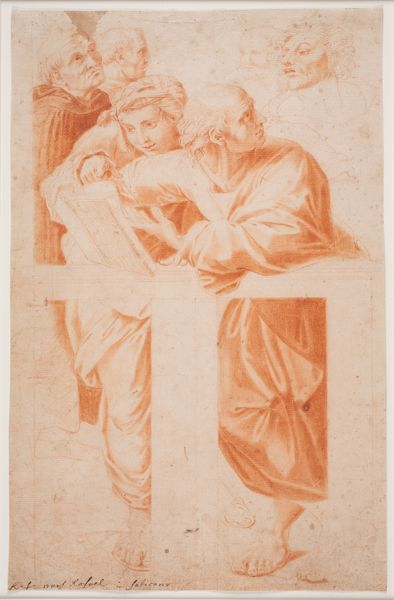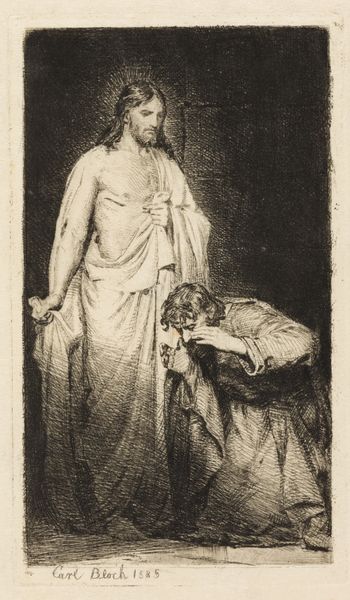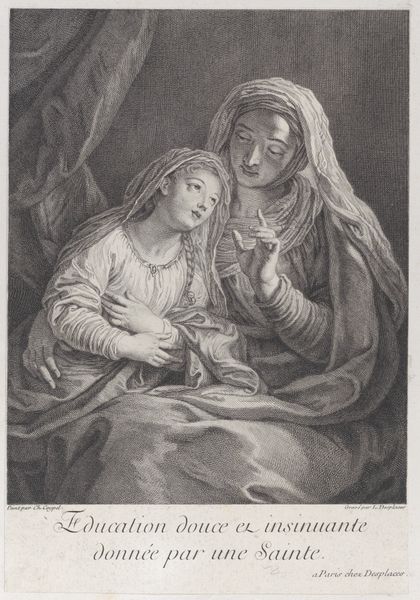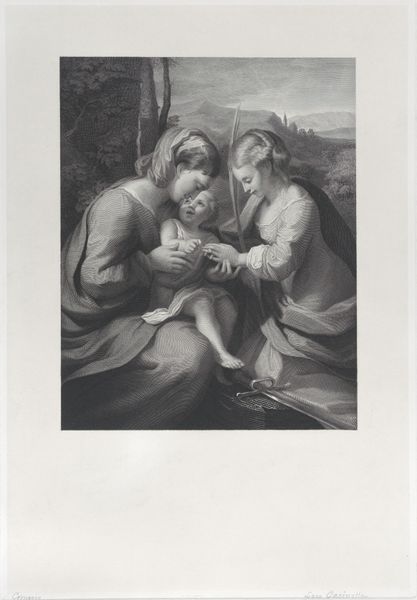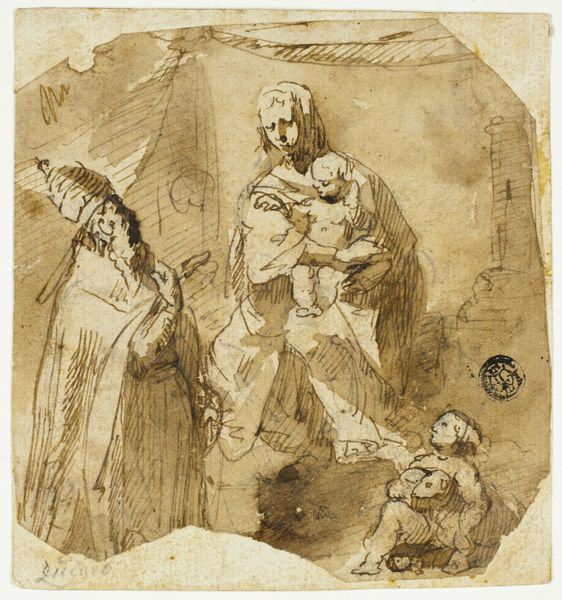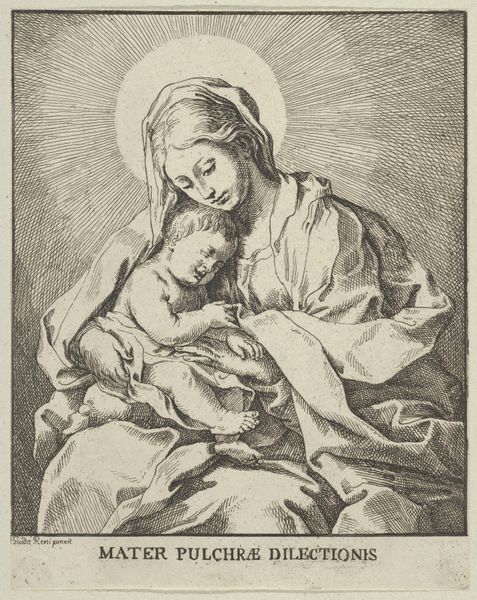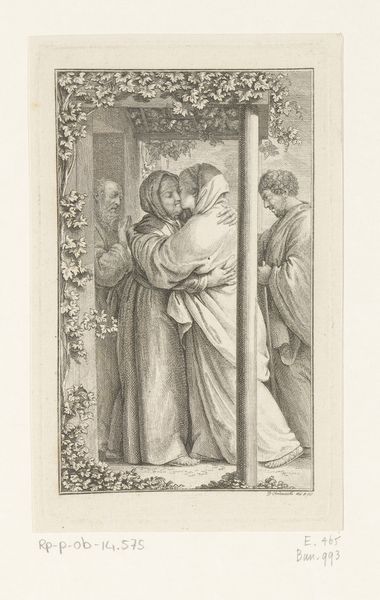
Maria als Mater Dolorosa met de overleden Christus in haar armen 1831 - 1890
0:00
0:00
jeanbaptistepierremichiels
Rijksmuseum
Dimensions: height 380 mm, width 240 mm
Copyright: Rijks Museum: Open Domain
Editor: Here we have a pencil drawing titled "Maria als Mater Dolorosa met de overleden Christus in haar armen," or "Mary as Mother of Sorrows with the dead Christ in her arms," made sometime between 1831 and 1890 by Jean Baptiste Pierre Michiels. It's intensely sorrowful. The dark lines emphasize the suffering. What strikes you most about it? Curator: Considering its potential public function, the piece reflects a broader cultural preoccupation with grief and religious piety prevalent in the 19th century. These images provided a focal point for personal devotion. I am drawn to how Michiels frames the intense emotion. Note how he strategically employs the crown of thorns to direct our gaze. Why place that in the front, rather than hide it with the body? Editor: Because it enhances the tragedy? Perhaps a visceral reminder of his physical torment for the contemporary audience. But it almost seems melodramatic now. Curator: Melodrama served a purpose. It elicited empathy, reinforcing the power of the church. Remember that the visual language surrounding religious iconography was carefully constructed and circulated via popular prints to reinforce institutional authority. Editor: So, it’s less about individual artistic expression and more about perpetuating religious influence? Curator: It is both! The artist definitely has his unique approach, like the level of details, but also exists within those larger societal constructs of how the church and its imagery should be. Think about who commissioned or consumed works like this. Were they primarily personal expressions of faith, or also meant to be displayed and shared? These pencil drawings democratized the images as opposed to huge commissioned paintings. Editor: That puts a different spin on things. I never thought of religious art as having a social and political context in that sense. It highlights the public nature of private grief. Curator: Exactly. By understanding these aspects, we gain a far more complete appreciation. Editor: Thank you. It has certainly provided new layers of thought on the historical background for analyzing this kind of work.
Comments
No comments
Be the first to comment and join the conversation on the ultimate creative platform.

